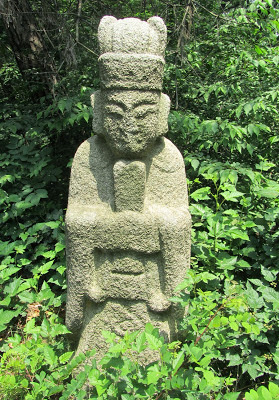
One thing not noted in the post is that the local school - Yangcheon Elementary - is notable for being 113 years old (it opened in 1900 as the Gongnip Sohakgyo, or public elementary school), which makes it quite old by Korean standards, and points to the former importance of the area (after which, today, is named a major street and even a city district (Yangcheon-gu, best known for Mok-dong). Here's a shot of the Hyanggyo:

At any rate, I'll have to get over there soon to find the spots I've missed.
They also checked out Sinbanghwa Station awhile ago, and were underwhelmed, which is understandable. The area used to have far more interesting neighbourhoods nearby, such as this one and this one, though they've disappeared to make way for the Magok development. Needless to say, the Magok area - which Sinbanghwa station borders - used to be far more scenic:

While there are a few good restaurants nearby, I suppose the most interesting spots are currently on the tops of nearby buildings where you can see what is becoming of Magok-dong:
(The above apartments are replacing this neighbourhood)
I have lots more to say about this development, but I'll save it for another day.
While Sinbanghwa Station has little to offer, Banghwa Station, on the other hand, has quite a bit of history - most of it to be found on Mt. Gaehwasan (which can also be reached from Gaehwasan Station and Gaehwa Station).
That, also, will have to wait for another day.




No comments:
Post a Comment
All comments are now to be moderated in order to keep the spammers at bay. My apologies for this.